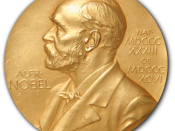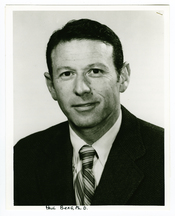On a cold New York morning in the early 1940s, Paul Berg left his home in Brooklyn heading to 528 Ridgewood Avenue, the site of Abraham Lincoln High School. The young Berg loved Chemistry, a feeling that grew after reading Paul de Kruif's Microbe Hunters and Sinclair Lewis's Arrowsmith. Berg was a member of the school's science club, which was lead at the time by Miss Sophie Wolfe, the school's laboratory demonstrator. She challenged her students and created an environment that promoted scientific curiosity. According to Berg, that was motivating; "She made science fun, she made us share ideas, and the better you did, the more you were praised."
After graduating from high school, Berg attended Pennsylvania State University where he received a Bachelor's degree in 1948. He then went on and got his PhD in 1952 from Western Reserve University. Twenty-eight years later Berg won the Nobel Prize in Chemistry for discovering recombinant DNA, a discovery that had a huge impact on genetic research.
During those twenty-eight years, however, something else happened. One year after receiving his PhD, Berg went to do postdoctoral work under Arthur Kornberg at Washington University School of Medicine in St. Louis. Kornberg, who was eight years older that Berg, was a genius, and it didn't take him long to discover how smart Berg was. He supported Berg's work that lead to disproving theories earlier established by two Nobel laureates on how fatty acids are transformed into their activated form. Kornberg himself shared the Nobel Prize in physiology or medicine a few years later in 1959 with Severo Ochoa for discovering the method by which DNA replicates in bacterial cells. Kornberg cited many sources of influence during his scientific life; one of them was the leader of the science club at his high school...


